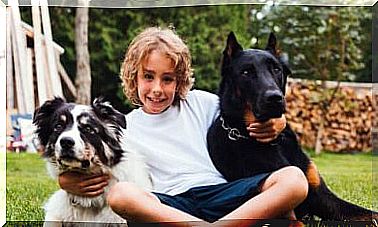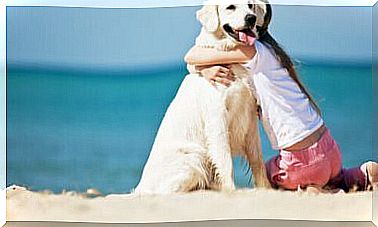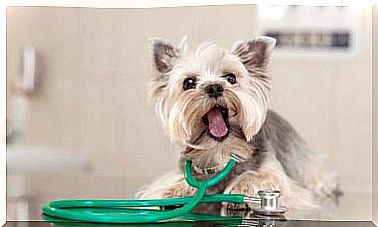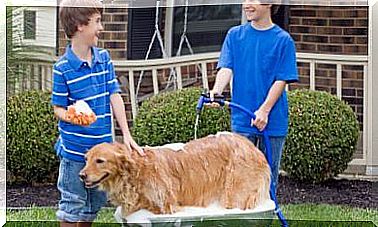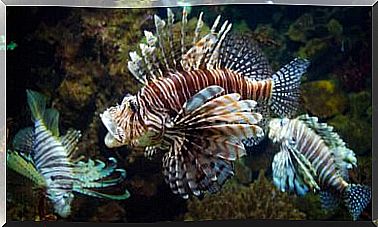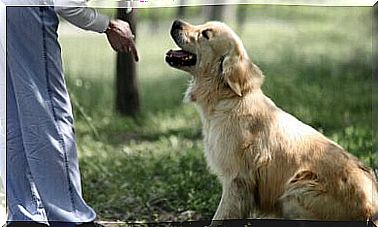Important Facts About Breastfeeding In Dogs
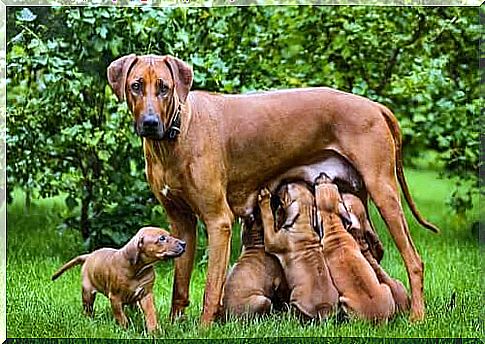
Breastfeeding in dogs is a relatively undiscussed topic. Naturally, the canine species has been breeding for a long time without human help. However, it is important to have accurate and adequate information when caring for our canine friends.
Below, we’ll provide some tips so you can take better care of puppies that are about to arrive (or have arrived) at your home. Take note!
1. Breastfeeding is the first vaccine a mammal receives
The intestine is important not only for its role in nutrition, but also because it is the largest organ in the mammalian body’s immune system. About 70% of the body’s immune system is found in the gastrointestinal tract.
Based on this, the interaction between the intestinal lymphoid tissue and the agents provided by breast milk is essential for protection against infections in the newborn.
2. At birth, the intestine has not reached its full maturity
Throughout life, the intestinal wall provides all mammals with exclusive protection. The intestinal wall acts as a physical barrier that prevents harmful substances and infectious agents from passing through.
In newborns, the barrier is not fully formed. This has an advantage: the factors provided by breast milk cross this barrier to the benefit of the offspring.
In fact, the mother ‘donates’ to her offspring a population of white blood cells from her own blood that protects the newborn during its first days of life.

3. Colostrum is vital for the puppy’s health
The breast secretion of the first day after delivery is known as ‘colostrum’. Colostrum is rich in growth factors that help to strengthen a puppy’s immature immune system.
It also helps to establish a balance of bacteria that colonize the animal’s intestines. The beneficial bacteria work by promoting nutrient absorption and reducing infection, diarrhea and intestinal inflammation.
The establishment of good intestinal microflora also induces intestinal wall cell maturation and barrier function. Research has been carried out to establish the benefit of colostrum in improving immunity and modulating gut microflora in puppies.
4. Breastfeeding in dogs is essential to neutralize pathogenic microorganisms
One of the protective functions of the intestine is to eliminate pathogenic microorganisms and neutralize toxins. These functions are usually associated with the action of IgA-type antibodies, which recognize pathogenic microorganisms and mediate their elimination.
Breast milk is the most enriched secretion in IgA. The binding of IgA to pathogens prevents its adhesion to the surfaces of the intestinal mucosa, preventing the infection of bacteria, viruses and parasites.
5. Breast milk contains and promotes the proliferation of probiotic bacteria
A diverse group of bacteria that produce lactic acid – known as lactobacilli – have a beneficial effect on the health of puppies. The benefit of lactobacilli probiotics is established during lactation, but lasts after weaning and until reaching adulthood.
Probiotics have been shown to decrease the incidence, severity and duration of diarrhea. Breast milk contains sugars that the intestine cannot digest. These sugars are used by the lactobacilli bacteria that proliferate in the newborn’s intestines.

6. The duration of breastfeeding in dogs is variable
The key to not making mistakes during weaning is a good observation. Consider two factors: your dog’s breed and growth rate.
Needless to say, all litters are different. A litter of eight puppies will need the introduction of complementary feeding before a litter of three puppies. This is to give the mother a rest.
In general, in smaller dog breeds, weaning occurs around 5 weeks of age. A puppy in good condition should be playful and energetic, with thick, shiny fur. Brown stool is a sign that your dog is digesting nutrients well.
A final recommendation: don’t rush the separation between the litter and the mother. Even after weaning, dogs learn many important lessons from their mother and littermates. These lessons include bite control, identifying your place in the pack, and how to play.
